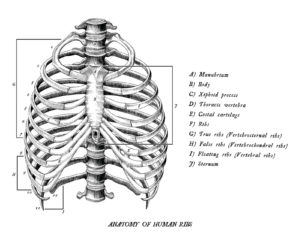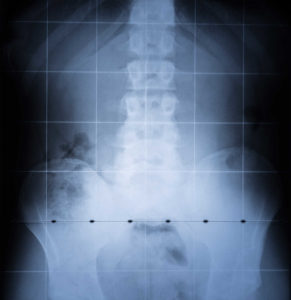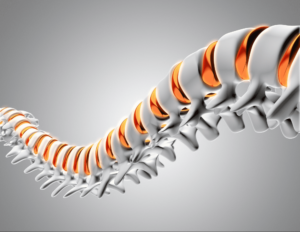There are more than 70,000 registered chiropractors (Doctors Of Chiropractic) in the United States along, treating 35 million Americans annually. All of this adds up to an estimated 1 million adjustments daily.
Doctors of Chiropractic are the first choice for millions of patients experiencing a wide range of musculoskeletal pain symptoms such as neck pain, back pain, shoulder pain, arthritis, plantar fasciitis, and more.
Still, there are many misconceptions around the chiropractic profession and manipulative therapy.
Everything from “not being real doctors” to “chiropractic is dangerous”, there is a surprising amount of opposition to chiropractic care. Not surprisingly, most of these beliefs are nothing more than common myths. This article explores some of the most common misconceptions that our chiropractors hear (myth #1-4) and other popular misconceptions (#5-7).
How Often Should You Go To A Chiropractor?
One of the biggest chiropractic myths that we hear about is treatment frequency. Patients will often come in seeking treatment for musculoskeletal pain but have fears of needing to come into the clinic weekly for the rest of their life to keep pain symptoms away. Many chiropractic offices employ a model that utilizes high volume and high frequency treatments. For example, they may see a new patient weekly for 3 months and then go down to once every 2 weeks for 3 months. We often inform our patients that our chiropractors are here to help eliminate pain improve quality of life, so they do not have to come in as frequently
Depending on the pain symptoms that a specific patient is having and their goals, treatment may consist of one visit a week for 4 to 5 weeks and a re-examination to see how much progress has been made. If the patient needs a little bit more treatment or has evolving goals that require more care, another treatment plan may be required.
Often patients will ask about “maintenance care”. At South Pointe Chiropractic, maintenance care is utilized when patients do not have major pain issues, but minor occurrences such as stiffness or a join feeling locked up. Many patients choose to come back in every 6 to 8 weeks adopting an as needed basis. Beyond maintenance care, patients often visit their chiropractor if they have pain from a new injury such as a fall, sports injury, or lifting a heavy object resulting in pain symptoms.
An important part of the process is patient education, many patients who come in for chiropractic care that have seen chiropractors in the past are cautious because they have been sold into extensive treatment plans in the past. Fortunately this is simply not the case when seeing a medically integrated chiropractor, and we make sure that patients understand this from day one.
If The Spinal Adjustment Does not "Pop" Is Something Wrong?
Myth #2: Cavitation or “popping” sound is a sign of a successful spinal manipulation.
Fact: Cavitation is a release in the joint capsule, it has no bearing on the effectiveness of chiropractic treatments.
Another common chiropractic myth revolves around the cavitation or “popping” sound that is associated with a successful chiropractic adjustment. Some people believe that “everything is supposed to pop”, and if no cavitation occurs during an adjustment that something has gone wrong. This is an incorrect belief, the cavitation is nothing more than a release of gases within the joint capsule or movement of tendons and ligaments, and this does not need to occur for relief to be felt or pain symptom improvement to occur.
- Gases releasing: The joint capsule contains synovial fluid, which acts as a natural lubricant. This synovial fluid contains carbon dioxide, nitrogen, and oxygen. When the joint capsule is stretched to its end range of motion during chiropractic treatments, the gas is released rapidly which is responsible for the “popping” sound (cavitation).
- Movement of ligaments, tendons and joints: This commonly occurs during chiropractic therapies that are focused on the knee or ankle. When the joint is moved, the position of the corresponding tendon changes, and a snapping sound may be heard when the tendon moves to its original placement.
While the cavitation or “popping” sound may provide some sort of mental relief to the patient that a proper adjustment has been made, it really has no bearing of the effectiveness of the manipulation.
Some chiropractic patients are concerned when stretching on their own they hear their back or neck pop and are concerned that it is detrimental to chiropractic care that they receive. This is called “self-mobilization”, which occurs naturally and is not a bad thing, it does not negatively impact chiropractic care that they have been receiving. The popping sound when self-mobilizing is a release of pressure in the joint capsule and is in fact a good thing, if it does not cause any pain. If persistent pain is felt when self-mobilizing, there may be underlying issues.
Is It Safe To See A Chiropractor?
Myth #3: Chiropractic methods are dangerous and should be avoided.
Fact: Chiropractic including spinal manipulations are safe and widely accepted as a low risk pain relief therapy.
New patients who have never seen a chiropractor before are worried about safety, interestingly individuals are often commonly about the possibility of a broken neck. This belief seems to stem from action movies where a character has their neck broken with a swift and forceful hand movement.
This belief is of course incorrect, chiropractic adjustments focus on the joints at their end range of motion using a proper amount of force. The force required to break the human spine and sever the spial cord take 1000 to 1250 pounds, which is significantly greater than the typical 1 to 7 pounds force used in chiropractic adjustments.
The amount of incidents that occur as a result of chiropractic adjustments are significantly lower than other medical treatments such as surgery of prescription painkillers.
Before a patient receives treatment they undergo an initial examination to make sure that they are healthy enough to receive chiropractic care. Some common red flags that chiropractic care will not be used to treat include:
- Infections
- Broken bones
- Bone tumors
- Severe arthritis
- Herniated Disc
- Slipped disc
- Some diseases
There are also different types of chiropractic manipulations, and if a patient has concerns about the safety of chiropractic care, they receive LVLA (low velocity low amplitude) adjustments, as opposed to HVHA (high velocity high amplitude) adjustments.
Another way to look at the safety of chiropractic adjustments is to examine average malpractice insurance rates. Some of the most common types of malpractice insurance include; Chiropractic, $500 per year; Internal Medicine; $8,274 per year; Obstetrics & Gynecology (OBGYN’s), $49,804 per year; General Surgery, $41,775 per year.
These insurance rates for providers are a direct reflection of the risk involved for patients, as you can see chiropractic care is significantly lower than other common doctors, which shows that the risk of chiropractic care is minimal compared to other types of care that you can receive.
I need To Have X-ray Imaging During My Initial Examination, Right?
Myth #4: X-rays and other types of imaging are necessary during an initial exam to determine a care plan.
Fact: Imaging during the initial examination is often used as a tactic to sell extensive treatment plans. In reality it is only needed when a patient has had multiple visits and progress does not match expectations, or if past major physical traumas are involved.
One of the most common misconceptions that we hear surrounding chiropractic care is when patients come in, often times who have been cared for at other chiropractic practices and are expecting x-rays. Many chiropractors use the x-ray in the initial exam to point out symptoms such as slight rotation in the spine or degeneration, designed to get them on a “treatment plan”. Due to this experience with past chiropractors, many patients assume that imaging will be done as the first step in the process.
Imaging is not necessary for the vast majority of chiropractic patients. X-ray’s or MRI imaging is used if clinical indications present themselves that they are needed such as past physical traumas.
Another instance that x-ray imaging is used would be in cases of patients who have received conservative care for 4 – 6 visits and progress is not headed in the right direction. In this case an X-ray or MRI would be utilized, depending on the concern whether it is soft tissue, disc integrity, or nerve compression.
Are Chiropractors Real Doctors?
Myth #5: Chiropractors are not doctors.
Fact: Chiropractors are federally recognized as licensed doctors.
This is one of the longest standing myths around chiropractors, and is simply not true. Chiropractors undergo extensive training and chiropractic school, on average completing over 4,200 classroom hours and years of clinical internships.
The main difference between chiropractors and medical doctors involves treatment methodologies. Medical doctors are not specifically trained in musculoskeletal conditions, and when pain relief is needed they will likely prescribe medication which only covers up the issue instead of treating it. Surgical procedures are also commonly implemented by medical doctors, doctors of chiropractic use spinal manipulations and other techniques to treat a wide range of conditions without relying on surgery or medication.
If you would like to learn more about chiropractors and credentials, please check out our article “Are Chiropractors Doctors?“.
Are Chiropractic Doctors Expensive?
Myth #6: Chiropractic care is expensive.
Fact: Seeing a chiropractor on a regular basis reduces overall medical expenses.
While some chiropractors offer high cost, cash only, long term treatment plans – this is not representative of the profession of chiropractic as a whole. Many chiropractors accept most major insurance plans, which results in the patient only paying a copay that is specific to their coverage.
Want to learn more about chiropractic costs? Read our article “How Much Does A Chiropractor Cost?“.
Overall, the treatment options available for managing issues such as chronic pain and other health conditions save money in the long term. Studies have estimated that visiting a licensed chiropractor regularly can reduce pharmaceutical costs by up to 85%, not to mention reducing the reliance on pharmaceutical medications.
Do Chiropractors Only Treat Back Pain?
Myth #7: Chiropractors only see patients for back pain.
Fact: Chiropractors treat a wide variety of musculoskeletal pain symptoms, utilizing a variety of techniques.
Although many patients seek out chiropractors for back pain, the idea that they only treat back pain is a misconception. Back pain is only a small portion of conditions that chiropractors are capable of treating. Some common conditions that can be treated include:
- Neck pain
- Headaches
- Back pain
- Shoulder pain
- Sciatica
- Disc injuries
- Arthritis
- Degenerative disc & joint disease
- Whiplash injuries
- Ligament sprains
- Plantar Fasciitis
Joint manipulation for spinal issues is often thought of as the only treatment that chiropractors offer, but in reality manipulation is just one tool that chiropractors utilize. Depending on the individual patient and their goals some techniques used may include: manipulations, massage, blood flow restriction training, neuromuscular re-education, exercise instruction, dry needling, myofascial release, cupping, instrument assisted soft tissue mobilization, and nutritional plans.
Conclusion
If you are looking for a natural healing approach to musculoskeletal pain symptoms, do not let these common misconceptions steer you away from receiving high quality chiropractic care. There is a reason that millions of people trust their pain relief to chiropractic care yearly, the pain relief and improvement on their quality of life is substantial.
At South Pointe Chiropractic we have a professional team of local chiropractors in an integrated medical setting. What this means for our patients is accessible chiropractic, primary care, massage therapy, physical therapy, and mental health counseling all under the same roof with providers working as a team to create the best treatment path.
Are you searching for a “chiropractor near me“?
We are located in Lafayette, CO near the Coal Creek Trail. Please contact us today to learn more or schedule an appointment.




